Pre-Roman Spain
People have been living in what is now Spain for a very, very long time. Archaeologists have found cave art, stone tombs, and other evidence of human habitation that are tens of thousands of years old. Among the first evidence of settlement by another well-known ancient culture is that of Gadir, a colony founded by the Phoenicians. Gadir later became Cádiz. It was the Phoenicians, through their Punic language, who named España, terming it after Isephanim, the island of rabbits, otherwise known as Andalucía. Also settling in the area were Celts, who populated much of Europe. As well came the Greeks, arriving in the 9th Century B.C. They settled on the eastern  Mediterranean coast and left behind the name of the peninsula, Iberian, after the River Iber, more well-known as the Ebro. The powerhouse Carthaginians arrived in the 7th Century B.C., eventually setting up Qart Hadasht (New Carthage) as their headquarters and convincing the Greeks to abandon their settlements. The most well-known Mediterranean powerhouse, Rome, was in its infancy at this time. It didn't take long for Roman traders and then settlers to arrive in Iberia, invading from the south, defeating the settlers there, and founding the town of Itálica. Carthage and Rome fought three wars for supremacy in the region. Rome won all three; and by 19 B.C., Rome had taken control of Spain.
Mediterranean coast and left behind the name of the peninsula, Iberian, after the River Iber, more well-known as the Ebro. The powerhouse Carthaginians arrived in the 7th Century B.C., eventually setting up Qart Hadasht (New Carthage) as their headquarters and convincing the Greeks to abandon their settlements. The most well-known Mediterranean powerhouse, Rome, was in its infancy at this time. It didn't take long for Roman traders and then settlers to arrive in Iberia, invading from the south, defeating the settlers there, and founding the town of Itálica. Carthage and Rome fought three wars for supremacy in the region. Rome won all three; and by 19 B.C., Rome had taken control of Spain.
Roman Spain
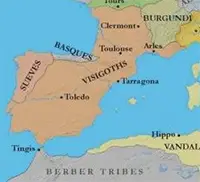 The Romans, after defeating Carthage in the Punic Wars, had initially divided the peninsula into two provinces, Hispania Citerior (Near) and Hispania Ulterior (Far). In the west later was Lusitania (with its capital at Mérida), which many years later became Portugal. That area held off Roman occupation for many years, as did the city of Numantia. As with many other area civilizations, however, Rome was eventually the master of the Iberian Peninsula. By 19 B.C., Baetica and Tarraconensis were provinces of Hispania as well. The by-products of Roman civilization spread throughout Spain. Roads connected cities, other aspects of Roman civilization (like aqueducts and baths and villas and fora) grew in number, and trade between Spain and the rest of the Roman world proliferated. Rome granted citizenship to native peoples, as had been done elsewhere in the Republic and then the Empire. Some of Rome's most famous names came from Hispania: Lucan, Marcus Aurelius, Seneca, and Trajan. Germanic tribes spilled over into Hispania in the 5th Century, after the Empire had split in two. The Alans and Vandals preceded the Visigoths in occupying some and then much of the peninsula. Settling in Lusitania were the Suevi. The Visigoths, after ousting the other Germanic tribes, ruled for a time, with a capital at Toledo. They then fought a fierce battle with Belisarius and troops from the Byzantine Empire. The invaders triumphed and ruled for a time, with a capital at Cordoba. The Visigoths regained control in 616. They held it for close to a century, until the powerful Moors arrived.
The Romans, after defeating Carthage in the Punic Wars, had initially divided the peninsula into two provinces, Hispania Citerior (Near) and Hispania Ulterior (Far). In the west later was Lusitania (with its capital at Mérida), which many years later became Portugal. That area held off Roman occupation for many years, as did the city of Numantia. As with many other area civilizations, however, Rome was eventually the master of the Iberian Peninsula. By 19 B.C., Baetica and Tarraconensis were provinces of Hispania as well. The by-products of Roman civilization spread throughout Spain. Roads connected cities, other aspects of Roman civilization (like aqueducts and baths and villas and fora) grew in number, and trade between Spain and the rest of the Roman world proliferated. Rome granted citizenship to native peoples, as had been done elsewhere in the Republic and then the Empire. Some of Rome's most famous names came from Hispania: Lucan, Marcus Aurelius, Seneca, and Trajan. Germanic tribes spilled over into Hispania in the 5th Century, after the Empire had split in two. The Alans and Vandals preceded the Visigoths in occupying some and then much of the peninsula. Settling in Lusitania were the Suevi. The Visigoths, after ousting the other Germanic tribes, ruled for a time, with a capital at Toledo. They then fought a fierce battle with Belisarius and troops from the Byzantine Empire. The invaders triumphed and ruled for a time, with a capital at Cordoba. The Visigoths regained control in 616. They held it for close to a century, until the powerful Moors arrived.
Moorish Spain
The Visigothic hold on the Iberian peninsula was waning as the 8th Century began. Toledo, the capital, was hemorrhaging control because of a dread combination of famine, disease, and internal dissent. In 711, a rival claimant to the throne of King Roderic appealed for assistance to the Arabs and Berbers who lived in North Africa, just across the Straits of Gibraltar. By then converted to Islam, the Moors, as they came to be 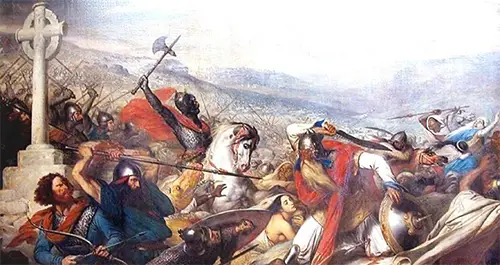 known, were only too happy to oblige and arrived with a 10,000-soldier-strong army. That army made quick work of Roderic and the Visigoths at the Battle of Guadalete, and the invaders set about rolling up opposition further north. It took them only seven years to conquer all but a bit of Asturias. The Moors renamed the place al-Andalus. In 718, the remnants of the European presence began a centuries-long struggle to retake Spain. This was the Reconquista. A confident Moorish army crossed the Pyrenees into what is now France, marching ever northward toward the English Channel. They were stopped monumentally by Charles Martel and a Frankish army at the Battle of Tours, in 732. The invaders turned back south. At a time when many European cities had gone "dark," Muslim cities were lighting the way to the expansion of knowledge and technology. Astronomy, math, and medicine all flourished in Córdoba and other such cities. The capital boasted a thriving university, and one of the largest libraries in the world, courtesy of Al-Hakam II. Libraries and bookshops were popular throughout Al-Andalus, as was the use of paper, not only in books but also in bills of sale and notices. Moor rulers also introduced new crops into their part of the peninsula. Almonds, artichokes, bananas, dates, figs, lemons, oranges, peaches, rice, saffron, and sugar all found new homes, the crops all irrigated using new techniques imported from the Middle East. As well, cities were vibrant collections of neighborhoods of houses connected by paved streets lit by street lamps–a scenario much more advanced than elsewhere in Europe. During the last half of the 12th Century and for much of the 13th Century, the Christian kingdoms worked more and more together. In 1212, Aragon, Castile, Navarre, and Portugal combined to defeat a Muslim force at Las Navas de Tolosa. Christian armies took Córdoba in 1236, Valencia in 1238, and Seville in 1248. It was a combination of Aragon and Castile power that brought about the final conquest of Granada, in 1492. That combination came by way of the marriage of Ferdinand of Aragon and Isabella of Castile, in 1469; her ascension as Queen of Castile, in 1474; and his ascension as King of Aragon, in 1479. The combination of those kingdoms' armies brought about the final will and might needed to take Granada. The Reconquista was complete.
known, were only too happy to oblige and arrived with a 10,000-soldier-strong army. That army made quick work of Roderic and the Visigoths at the Battle of Guadalete, and the invaders set about rolling up opposition further north. It took them only seven years to conquer all but a bit of Asturias. The Moors renamed the place al-Andalus. In 718, the remnants of the European presence began a centuries-long struggle to retake Spain. This was the Reconquista. A confident Moorish army crossed the Pyrenees into what is now France, marching ever northward toward the English Channel. They were stopped monumentally by Charles Martel and a Frankish army at the Battle of Tours, in 732. The invaders turned back south. At a time when many European cities had gone "dark," Muslim cities were lighting the way to the expansion of knowledge and technology. Astronomy, math, and medicine all flourished in Córdoba and other such cities. The capital boasted a thriving university, and one of the largest libraries in the world, courtesy of Al-Hakam II. Libraries and bookshops were popular throughout Al-Andalus, as was the use of paper, not only in books but also in bills of sale and notices. Moor rulers also introduced new crops into their part of the peninsula. Almonds, artichokes, bananas, dates, figs, lemons, oranges, peaches, rice, saffron, and sugar all found new homes, the crops all irrigated using new techniques imported from the Middle East. As well, cities were vibrant collections of neighborhoods of houses connected by paved streets lit by street lamps–a scenario much more advanced than elsewhere in Europe. During the last half of the 12th Century and for much of the 13th Century, the Christian kingdoms worked more and more together. In 1212, Aragon, Castile, Navarre, and Portugal combined to defeat a Muslim force at Las Navas de Tolosa. Christian armies took Córdoba in 1236, Valencia in 1238, and Seville in 1248. It was a combination of Aragon and Castile power that brought about the final conquest of Granada, in 1492. That combination came by way of the marriage of Ferdinand of Aragon and Isabella of Castile, in 1469; her ascension as Queen of Castile, in 1474; and his ascension as King of Aragon, in 1479. The combination of those kingdoms' armies brought about the final will and might needed to take Granada. The Reconquista was complete.
The Kingdom of Navarre
Navarre was one of medieval Spain's powerhouse kingdoms. Its location, straddling the Pyrenees and containing the only pass through those mountains, gave it influence over affairs in both France and the Iberian Peninsula. As well, that location made Navarre a target for incursions and intrigues from its neighbors. In the 8th Century, what is now Navarre was the Kingdom of Pamplona. An early highlight was a victory over Charlemagne and his troops in 778, at the Battle of Roncesvalles. A series of kings of Navarre fought for supremacy with neighboring kingdoms and against the Moors. The end of the Kingdom of Navarre came in 1512 at the hands of Ferdinand, King of Aragon and Castile.
The Kingdom of Castile
The first King of Castile was Ferdinand I, who took the title in 1035 after his father, Navarre's King Sancho the Great, died. One of Castile's most famous knights—and one of Spain's overall most famous heroes—was El Cid, who led the way to the Christian capture of the important city of Valencia in 1094. Castile merged its fortunes with León. A number of kings named Alfonso ruled Castile through the years, as the kingdom became one of the two biggest on the peninsula. The other, Aragon, fused with Castile in 1479, courtesy of the marriage of Ferdinand II of Aragon and Isabella I of Castile.
The Kingdom of Aragon
Aragon was a medieval kingdom of Spain, one of the prime movers in the Reconquista, and one of the two entities that constituted the beginning of a united Spain. Aragon was a leading force in the Reconquista, the taking back of land from the Moors. In 1179, Aragon and Castile agreed to divide between them any lands retaken from the Moors. This included, in 1238, the prize of Valencia, which paved the way for expansion in the Mediterranean arena. One of the first such extensions was into Sicily, in the late 13th Century. The following century brought Aragonese influence over another island, Sardinia, and, in 1442, the big prize of the Kingdom of Naples. Aragon's King Ferdinand II married Castile's Isabella I, cementing a union of Spain.
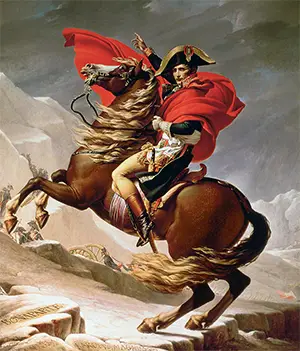 The Napoleonic Era
The Napoleonic Era
He rose from humble beginnings and achieved lasting fame and recognition. Famed as a military commander and a political leader, famed as the husband of Joséphine, Napoleon achieved greatness for France but also brought about great sorrow. He and the Grand Armeé had great success–at Austerlitz and Borodino and Jena–but also suffered great defeats–at Trafalgar, in Russia, and at Waterloo. He redrew the political map of Europe, particularly with the Confederation of the Rhine and Continental System, a progenitor of the European Common Market that was designed to exclude the U.K. from European trade.
The Last Monarchs of France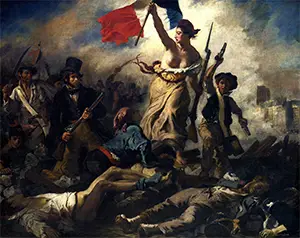
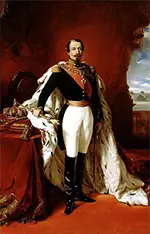 Napoleon was defeated and exiled, twice. The new ruler of France was Louis XVIII, whose prestige and authority benefited from a decade of prosperity but suffered in a time of famine and want. His son, Charles X, had a hard of it and was replaced during the July Revolution by Louis Philippe. This was the time of the Romantic era in Europe. A series of revolutions in 1848 featured one in France, and the king fled the throne in favor of another republic, led by President Louis Napoléon Bonaparte. In 1851, he became Emperor Napoleon III. His rule had varying degrees of success and failure. The most notable of the latter was the disastrous defeat in the Franco-Prussian War, in which he himself was captured. France's defeat was the death knell of his time on the imperial throne. Indeed, he was the last monarch of France.
Napoleon was defeated and exiled, twice. The new ruler of France was Louis XVIII, whose prestige and authority benefited from a decade of prosperity but suffered in a time of famine and want. His son, Charles X, had a hard of it and was replaced during the July Revolution by Louis Philippe. This was the time of the Romantic era in Europe. A series of revolutions in 1848 featured one in France, and the king fled the throne in favor of another republic, led by President Louis Napoléon Bonaparte. In 1851, he became Emperor Napoleon III. His rule had varying degrees of success and failure. The most notable of the latter was the disastrous defeat in the Franco-Prussian War, in which he himself was captured. France's defeat was the death knell of his time on the imperial throne. Indeed, he was the last monarch of France.
|
Search This Site
 Custom Search
|
Social Studies for Kids
copyright 2002–2020
David White
